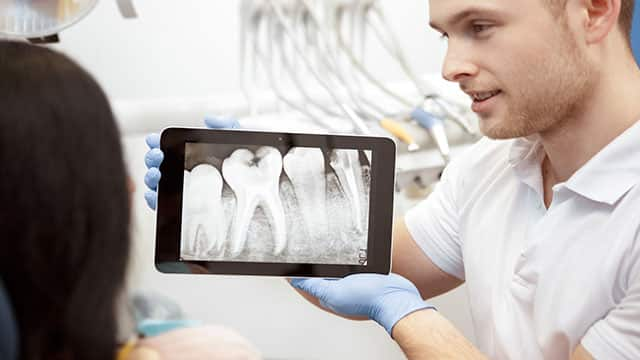Tooth Dilaceration: What You Need to Know
If the crown (top) or root of a tooth has an irregular bend, this is known as a tooth dilaceration. This leads to a curved section of your or your child’s tooth, including the crown, root, or root tip. It can occur in any tooth type but is much more likely to occur in primary teeth, also known as baby teeth.
It's crucial to receive an accurate diagnosis by a dental professional, as tooth dilaceration can alter other dental care recommendations that you or your child receives. Even if not treating the dilacerated tooth directly, its presence may alter their approach to your other teeth.
Diagnosis and Causes
Because x-rays take two-dimensional images of your mouth, it can be difficult to capture the image and diagnose your dilacerated tooth fully. For this reason, cone-beam computer tomography (CBCT) is often used by your dental professional to help provide a clearer image of your condition, leading to more accurate diagnosis and treatment.
According to the International Journal of Clinical Pediatric Dentistry, the exact prevalence and range of causes are not fully understood. The typically understood causes are injury to your or your child's baby teeth, developmental issues, and various medical conditions.
The causes of dilaceration may include:
- Developmental problems due to genetics or disease
- Medical conditions, including cysts and tumors
- Traumatic injury to your baby tooth or teeth
- Baby tooth or teeth that did not properly grow out
- Presence of an extra tooth or teeth
Prevention and Treatment
Because other health problems and trauma cause tooth dilaceration, it is sometimes impossible to prevent. Your best bet not to develop this condition is to avoid injury to your or your child's mouth and stay ahead of other oral health issues through proper dental care.
Regular visits to your dental professional can help catch this condition early to prevent associated issues from occurring. If your dilaceration is minor, you may likely require no treatment.
According to the International Journal of Clinical Pediatric Dentistry, treatment varies based on numerous factors. If you do require treatment, options will vary depending on:
- Its severity and the underlying cause
- The position and direction of the affected tooth
- The amount of space around the affected tooth
- The amount of root formation
- Recommendation of your dental professional
If you do require treatment, the options typically require surgical intervention. Depending on your individual needs, your dental professional may recommend traction (putting pressure on your tooth) to guide your or your child's tooth or extraction of the tooth.
It’s vital to intervene with your dental professional as early as possible to prevent complications, so you’ve made the right choice to inform yourself about this condition. You’ve done a great job by acquiring an understanding of the causes and treatments for tooth dilaceration.
Oral Care Center articles are reviewed by an oral health medical professional. This information is for educational purposes only. This content is not intended to be a substitute for professional medical advice, diagnosis or treatment. Always seek the advice of your dentist, physician or other qualified healthcare provider.
ORAL HEALTH QUIZ
What's behind your smile?
Take our Oral Health assessment to get the most from your oral care routine
ORAL HEALTH QUIZ
What's behind your smile?
Take our Oral Health assessment to get the most from your oral care routine















